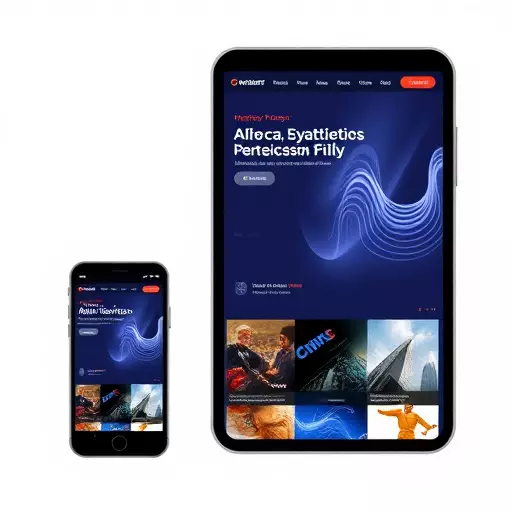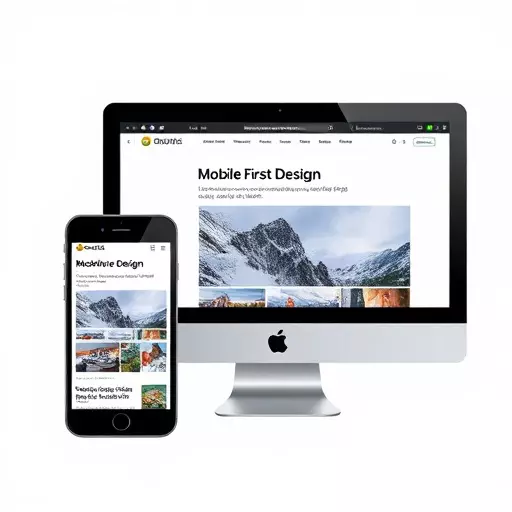In New Jersey, mobile-first responsive design has evolved with adaptive web design, utilizing fluid grid layouts and flexible images and media to create immersive, 3D-like perspectives. This approach ensures websites seamlessly adapt from smartphones to desktops, enhancing user engagement and experience. By prioritizing these strategies, developers craft visually rich, interactive sites that cater to tech-savvy users across all devices, revolutionizing web creation in the state.
Parallax scrolling, a powerful visual technique, transforms websites into captivating experiences. In the realm of mobile-first responsive design in New Jersey, understanding and implementing this effect is crucial for creating immersive user interfaces. This article delves into the intricacies of parallax scrolling, offering insights on its benefits, especially in optimizing for small screens. We explore adaptive web design techniques, focusing on fluid grid layouts and flexible images to enhance mobile experiences. By following best practices tailored for New Jersey’s mobile landscape, developers can create stunning, responsive websites that engage users effectively.
- Understanding Parallax Scrolling: A Visual Deep Dive
- Mobile-First Approach: Optimizing for Small Screens
- Adaptive Web Design: Creating Fluid Layouts with Responsive Images
- Best Practices: Implementing Parallax Effect in New Jersey's Mobile Landscape
Understanding Parallax Scrolling: A Visual Deep Dive

Parallax scrolling is a stunning visual effect that adds depth and interactivity to websites, enhancing user engagement. This technique simulates a 3D perspective by making background images move at different speeds than the foreground content when a user scrolls, creating an immersive experience. In the context of mobile-first responsive design in New Jersey, understanding parallax scrolling is crucial for creating visually appealing and adaptive web designs.
By implementing fluid grid layouts and flexible images and media, developers can ensure that parallax effects transition smoothly across various screen sizes. Adaptive web design, which prioritizes flexibility and responsiveness, allows content to rearrange and adapt based on the user’s device. This approach is essential for maintaining a consistent user experience, as viewers in New Jersey, whether on smartphones or desktops, will appreciate a visually rich and interactive website that adapts seamlessly to their screens.
Mobile-First Approach: Optimizing for Small Screens

In the realm of modern web design, especially with the ubiquity of mobile devices, adopting a mobile-first responsive design in New Jersey has become a game-changer. This approach prioritizes smaller screens, ensuring that websites adapt seamlessly to various device sizes and orientations. By optimizing content and layout for mobile users first, designers can create an adaptive web experience that caters to the majority of internet users.
Implementing fluid grid layouts and flexible images and media are key strategies within this method. Fluid grids adjust their structure based on available space, making content scalable and responsive. Meanwhile, flexible images and media adapt their size proportionally, ensuring they remain viewable without distortion or excessive scrolling. This adaptive web design philosophy not only enhances user experience but also keeps websites relevant in a constantly evolving digital landscape.
Adaptive Web Design: Creating Fluid Layouts with Responsive Images

In the realm of mobile-first responsive design in New Jersey, Adaptive Web Design stands out as a game changer. It involves creating fluid layouts that seamlessly adapt to various screen sizes and resolutions, ensuring an optimal user experience across devices, from smartphones to desktops. One key component driving this adaptability is the strategic use of fluid grid layouts, which allow content to redistribute dynamically based on the available space.
This approach is further enhanced by incorporating flexible images and media, enabling them to scale gracefully without sacrificing quality or visual appeal. Unlike rigid layouts that may break or distort on smaller screens, adaptive web design leverages CSS media queries and responsive image techniques to present content in a visually pleasing and functional manner. This not only improves accessibility but also boosts user engagement, making the website truly versatile for all users, regardless of their device.
Best Practices: Implementing Parallax Effect in New Jersey's Mobile Landscape

When implementing the parallax scrolling effect in a mobile-first responsive design for New Jersey’s tech-savvy users, it’s crucial to prioritize adaptability and performance. Adopt fluid grid layouts that adjust seamlessly across various screen sizes, ensuring your website remains visually appealing on smartphones and tablets. Utilize flexible images and media elements that scale proportionately, preventing jarring visual distortions or bloated layouts.
For optimal user experience in New Jersey’s mobile landscape, focus on efficient data loading and smooth animation. Optimize image formats and sizes to reduce load times without sacrificing visual quality. Employ lazy loading techniques for background media and content to delay their appearance until users scroll closer, enhancing overall site speed.


